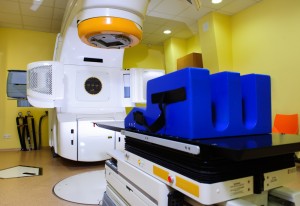 Royal Philips has announced the launch of a series of radiology devices designed to improve diagnostic imaging, informatics and image-guided therapy, during the 2014 Radiological Society of North America Annual Meeting (RSNA).
Royal Philips has announced the launch of a series of radiology devices designed to improve diagnostic imaging, informatics and image-guided therapy, during the 2014 Radiological Society of North America Annual Meeting (RSNA).
With the new products, planned to be launched in the United States next year, the company expects to improve clinical performance, as well as create better experiences for patients while improving the overall quality of health care systems.
Royal Philips CEO Frans van Houten presented Philips’s new products for dosage management and data processing. “Radiology is and will always be at the heart of the health continuum, as it is central to diagnosis and ensuring the right treatment reaches patients at the right time,” van Houten stated in a press release. “In an increasingly connected world, Philips is committed to working with our customers to create innovative solutions that seamlessly integrate imaging technology with data analytics, consulting and services, to deliver more effective and lower cost health solutions.” van Houten also highlighted radiology’s importance in the management of several diseases, as well as its ability to diagnose early stages of disease.
The new products from Royal Philips include the first digital PET/CT in the world able to provide twice the resolution of volumetrics, sensitivity and accuracy, when compared with similar systems, Vereos PET/CT. The company also presented the first CT to add spectral resolution to image quality, delivering anatomical information while characterizing material content-based structures, IQon Spectral CT. Additionally, Royal Philips developed an ultrasound imaging delivery system that aims to improve clinical information, providing highly detailed images, temporal resolution and uniformity of tissue, even with challenging patients, the EPIQ Ultrasound.
In the field of clinical performance, the company presented Affiniti Ultrasound, a novel ultrasound system that can assist radiology departments delivering high quality health care to patients, particularly the ones with less resources. Additionally, IntelliSpace PACS offers physicians expedite results and improves collaborations with other doctors in order to support their decision-making process and improve health care.
Oncology Dashboard, is the company’s disease follow-up data system designed to capture a single overview centered on patients, as a way of favouring contact between both oncologists and radiologists.
 In addition, the company developed a soothing audiovisual solution to relax patients undergoing MRI scans, called Ingenia 1.5T S with Ambient MR In-Bore. Also dedicated to enhance patients’ experience are MicroDose SI and AlluraClarity Interventional Suites. While the first aims to offer patients a more convenient and less stressful experience during mammography, while providing superior image quality for non-invasive spectral applications, the second is a system of industry-leading interventional X-rays designed to conduct minimally invasive interventions and provide higher image quality at a low X-ray dose for neurology, oncology and cardiology.
In addition, the company developed a soothing audiovisual solution to relax patients undergoing MRI scans, called Ingenia 1.5T S with Ambient MR In-Bore. Also dedicated to enhance patients’ experience are MicroDose SI and AlluraClarity Interventional Suites. While the first aims to offer patients a more convenient and less stressful experience during mammography, while providing superior image quality for non-invasive spectral applications, the second is a system of industry-leading interventional X-rays designed to conduct minimally invasive interventions and provide higher image quality at a low X-ray dose for neurology, oncology and cardiology.
With the main purpose of delivering improved economic value, the Diagnostic X-Ray Suite is a solution for flexible digital radiography to improve access of care, comprising DuraDiagnost, DigitalDiagnost, MobileDiagnost and ProGrade.
[adrotate group=”1″]
Among Royal Philips new products are also Veradius Unity Mobile C-Arm, designed to improve workflow and establish communication between the clinician and both the operator and the C-arm, and IntelliSpace Portal, an integrating data system comprised of multiple imaging methods in order to provide physicians a more comprehensive perspective of each patient.
The company also organized a Lunch n’ Learn symposium to discuss the available technology for photon counting mammography and methods for measuring spectral density of breasts while characterizing spectral lesions.


